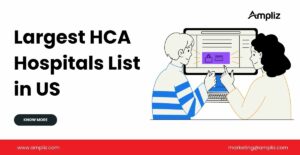Introduction: what is locum tenens physician?
Healthcare systems across the United States increasingly rely on locum tenens physicians clinicians who take temporary assignments to fill gaps caused by retirements, burnout, seasonal surges, and geographic maldistribution of providers. Locum models offer hospitals and clinics rapid coverage without the long lead times of permanent recruiting, and they give physicians flexible work options, extra income, and diverse clinical experience.
Over the last several years the locum tenens workforce has grown into a sizable, strategic labor pool that health systems can tap to stabilize service lines, avoid cancellations, and maintain patient access. Major industry studies show that the locum physician workforce is substantial and growing, and that credentialing and administrative friction remain the top operational challenges when using locums.
Market size: How many locum tenens physicians are there in the U.S.?
Industry reporting and market studies converge on the same range: roughly 50,000–52,000 physicians work locum tenens assignments in the U.S. each year — approximately 6–7% of the physician workforce. CHG Healthcare’s 2024 State of Locum Tenens report estimates about 52,000 physicians take locum assignments annually and notes that CHG works with a significant share of that workforce.
AMN Healthcare’s locum surveys and other industry sources confirm both the breadth of use and the growing reliance of hospitals on locums. These numbers make locum physicians a meaningful and addressable segment for hiring teams and vendor outreach.
List of Top Locum Tenens Physicians in the USA
| Locum Physicians Name | Practicing Hospital | Specialty | Specialty Group | State | Data |
| Jay A Swedberg | WESTERN MEDICAL ASSOCIATES, PC | Family Medicine (Family Practitioner) | Family/General Practice | WY | Access Now |
| William J Moran | Marshfield Clinic – Weston Center | Otolaryngologist | Speech-Language Hearing – Otolaryngology (ENT) | WI | Access Now |
| David Alan Femovich | NEW AGE PLASTIC SURGERY | Plastic & Reconstructive Surgery | Plastic Surgery | PA | Access Now |
| Jay Kelly Kennard | ONEIDA TRIBE OF INDIANS OF WISCONSIN | Family Medicine (Family Practitioner) | Family/General Practice | WI | Access Now |
| Frank Sabatelli | Frank Sabatelli, M.D. | Vascular & Interventional Radiologist | Radiology | TX | Access Now |
| Akbar Faisal Ahmed | CNY SURGICAL PHYSICIANS | General Surgery | Surgery | NY | Access Now |
| Melody Counts | FAMILY PRACTICE CTR | Family Medicine (Family Practitioner) | Family/General Practice | TN | Access Now |
| Samuel Charles Blackman | Buerger Center for Advanced Pediatric Care | Pediatrics – Hematologist & Oncologist | Oncology-Cancer | PA | Access Now |
| Barbara M Wirostko | GREENWOOD HEALTH CTR | Ophthalmologist | Eye and Vision | UT | Access Now |
| Shamsuddin Khwaja | Valley Cardiac Surgery, Inc. | Thoracic Surgery (Cardiothoracic Vascular Surgery) | Cardiology | CA | Access Now |
| Ardeshir T Tamboli | TRINITY HEALTH SYSTEMS | Allergist & Immunologist | Allergy & Immunology | OH | Access Now |
| Sharon L Gilliland | Baraga County Memorial Hospital | Pediatrics (Pediatrician) | Pediatrics (Pediatrician) | MI | Access Now |
| Shabir Bhayani | BRADFORD ORTHOPEDIC SPORTS MEDICAL | Orthopedic Surgery (Orthopedics) | Orthopedic | PA | Access Now |
| Robert B Parke | Robert B Parke, M.D. | Otolaryngologist | Speech-Language Hearing – Otolaryngology (ENT) | TX | Access Now |
| Thomas Joseph Jantos | Carson Valley Health Hospital (FKA Carson Valley Medical Center) | Emergency Medicine | Emergency Medicine | NV | Access Now |
| Robert S Smith | Uf Health Medical Lab – Shands Hospital | Trauma Surgery (Traumatologist) | Physician | FL | Access Now |
| Thomas Edward Greene | NORTH PENN ORTHOPEDIC ASSOCIATES | Orthopaedic Surgery (Orthopedics) | Orthopedic | PA | Access Now |
| William Robert Carter | Walter Reed National Military Medical Center | Diagnostic Radiologist | Radiology | MD | Access Now |
| Steven Laurence Brooks | Barton Urgent Care | Family Medicine (Family Practitioner) | Family/General Practice | NV | Access Now |
| Todd E Bush | PREMIER PEDIATRICS | Pediatrics (Pediatrician) | Pediatrics | KS | Access Now |
Fig. 1 – This is the real data is from Ampliz’s Healthcare Intelligence. Data accessed October 2025.
Top in-demand locum tenens specialties
While demand fluctuates by region and season, several specialties consistently dominate locum searches and placements:
- Hospital Medicine / Hospitalists — constant demand to staff inpatient services.
- Emergency Medicine — high turnover and unpredictable volume drive continuous need.
- Psychiatry / Behavioral Health — shortage of mental health clinicians in many states.
- Anesthesiology — OR coverage and procedural needs.
- Primary Care (Family Medicine, Internal Medicine, Pediatrics) — gaps in outpatient and rural areas.
- OB/GYN, Radiology, Surgical Subspecialties, Neurology, Oncology — high-value, high-demand roles for short or long assignments.
Why this matters: when you target locum candidates, prioritizing the specialties above will give your outreach the highest yield and fastest time-to-fill.
State-level demand: Where locum tenens are most needed (actionable list)
Demand varies widely across states due to population growth, aging, retirement rates among physicians, and rural provider shortages. Below is a compact, actionable ranking of states with the highest locum demand and the main drivers behind that demand (based on staffing reports and industry summaries). Use these as starting points when building amplified outreach lists in Ampliz.
Note: figures below summarize industry reporting and state trends — use Ampliz to refine counts and pull NPI/enrichment for target clinicians by state, specialty, and licensure.
Top states with elevated locum demand
- Texas — explosive population growth, underserved rural counties, and high turnover in certain specialties driving sustained demand.
- California — high population, rural pockets, and waves of burnout driving temporary coverage needs.
- Florida — aging population with increasing demand for hospitalists, geriatrics, and surgical coverage.
- Colorado — notable physician shortages in some specialties; high locum pay to attract coverage in rural counties.
- Arizona — rapid growth and regional provider gaps, especially in primary care and hospital medicine.
- North Carolina — expanding health systems and rural HPSAs (Health Professional Shortage Areas).
- Alabama / Mississippi — concentrated rural shortages and a need for primary care and OB/GYN coverage.
- Montana / Wyoming / Dakotas — low population density and long distances to tertiary centers make locums critical to maintaining local services.
- New York — urban demand plus rural upstate shortages, especially in psychiatry and hospital medicine.
- Ohio / Pennsylvania — aging populations and system consolidation create episodic coverage needs.
How to operationalize this: in Ampliz, create segments by State + Specialty + Willingness to Travel + NPI historical assignment flags (if available). Filter for active email/phone verification and recent locum assignments to prioritize clinicians actively doing locum work.
The end-to-end hiring playbook For Locum Tenens Physicins (step-by-step)
To hire locum tenens physicians effectively, follow this practical playbook:
1) Build precise target lists (use Ampliz)
- Filter by specialty, state licensure, NPI specialty taxonomy, past locum assignment indicators and contact verification status.
- Enrich clinician profiles with email, mobile, direct office line, public profiles, and recent assignment history.
- Create agency lists (top locum agencies, staffing coordinators, medical directors) to fast-track placements when you need short notice coverage.
2) Clarify the assignment up front
- Define start/end dates, shift times, expected case mix, EMR platform, and on-site accommodation/travel policy.
- State any credentialing windows or required exams (e.g., BLS/ACLS) so candidates can self-screen.
3) Fast credentialing is a competitive differentiator
- Credentialing is the most common friction point — plan for verification time and consider privileging or temporary credentialing pathways. Partnering with agencies that manage credentialing reduces lead time. CHG and client surveys identify credentialing as a top operational hurdle.
4) Price to market & include total cost
- Day rates vary by specialty, state, and assignment length. Consider total cost-of-fill: day rate, travel, housing stipends, malpractice, taxes, and agency fees. Reference recent pay trend guides when budgeting.
5) Onboarding & orientation
- Provide a concise on-site orientation checklist, EMR access in advance, and a single point of contact to minimize transition time.
6) Measure & iterate
- Track time-to-fill, assignment performance, billing accuracy, and clinician satisfaction. Use these KPIs to optimize agency relationships and direct outreach.
Sample outreach email templates (tailored & ready to send)
Below are three tested templates you can use after building amplified, verified lists in Ampliz. Each template assumes you have enriched recipient data (specialty, state, recent locum assignments) and valid contact info.
Pro tip: personalize subject lines with specialty + location (e.g., “Hospitalist role — 4-week assignment, Raleigh NC — starts Jun 10”).
1) Template: Direct outreach to a clinician (short-term assignment)
Subject: Hospitalist locum — 4-week assignment in Raleigh, NC — starts Jun 10
Hi Dr. [LastName],
My name is [YourName], Director of Clinical Staffing at [Hospital/Health System]. We have a 4-week hospitalist assignment at [Hospital Name], Raleigh, NC (EMR: Epic) starting June 10 to cover a physician leave. Based on your background in hospital medicine and recent locum placements in North Carolina, I wanted to check your interest and availability.
Quick details:
- Dates: June 10 – July 8
- Shifts: 7a–7p, 7 on / 7 off rotation (day & night coverage available)
- Rate: competitive day rate + travel & housing stipend
- Credentialing: expedited temporary privileging available
If you’re interested, can we schedule a 10-minute call today or tomorrow to confirm availability and next steps? If this isn’t a fit, would you recommend any colleagues who might be available?
Thanks,
[YourName]
[Title] | [Hospital]
[Direct Phone] • [Email] • [Calendly link]
(Use Ampliz to confirm Dr. [LastName]’s NPI, current license, and recent locum assignments before sending.)
2) Template: Outreach to agency recruiter (ask for vetted candidates)
Subject: Urgent: ER locum coverage needed — 2 weeks — Littleton, CO
Hi [RecruiterName],
We need two emergency medicine locums to cover short notice gaps at [Hospital Name], Littleton, CO — start date May 28. Each assignment is for 2 weeks with guaranteed 36 clinical hours/week. Please send CVs for candidates who:
- Are Board-certified in Emergency Medicine
- Have active CO license (or compact/reciprocal)
- Have recent ER locum experience within the last 12 months
We’re prioritizing candidates with prior exposure to [EMR name] and immediate credentialing documentation on file. Please share availability and rates by EOD.
Thanks,
[YourName]
[Title] | [Hospital Staffing Team]
[Phone] • [Email]
(Use Ampliz to pull agency contact info and enrich with agency size, specialties placed, and past performance signals.)
3) Template: Nurture message for clinicians not actively locumming (convert to locum list)
Subject: Flexible locum opportunities for [Specialty] — choose your schedule
Hi Dr. [LastName],
I work with [Staffing Team / Agency] to run curated locum assignments that fit physicians seeking flexibility. We have multiple upcoming assignments in [State(s)] offering flexible weeks, transparent day rates, and full support on credentialing and travel.
If you’re curious about short-term locums (week-long, month-long) or want to opt into our priority list, reply “YES” and I’ll send 2–3 nearby options that match your specialty and travel preferences.
Best,
[YourName]
[Title] • [Organization]
[Phone] • [Email]
(Ampliz can help you identify clinicians with the right profile who recently did locums and who may be open to occasional work.)
Pricing & budgeting: what to expect?
Locum tenens physicians near (me) you rates vary dramatically by specialty, region, and assignment length. Industry pay guides show anesthesiology, cardiology, and certain surgical subspecialties often command the highest daily rates; hospitalists and primary care sit lower on average. Budget for:
- Day rate (primary component)
- Travel & housing (if applicable)
- Malpractice (some assignments include coverage)
- Agency fees / markup (if using an agency)
- Credentialing costs (temporary privileging if used)
Reference current locum compensation guides and your internal benchmarking. Ampliz can help with market rate comparisons by state and specialty when enriched with recent placement signals.
Common pitfalls and how to avoid them
- Underestimating credentialing time — start verification early; keep a templated credentialing packet ready.
- Poor assignment detail — unclear scopes increase no-shows; be explicit about EMR, call expectations, and scheduling.
- Not verifying contact info — use Ampliz verification to prevent wasted outreach.
- Overlooking clinician preferences — ask about travel willingness and assignment cadence. Happy locums are repeat locums.
Case example (quick play)
A midsized system in the Southeast had recurring ED coverage gaps. Using Ampliz they:
- Built a list of EM physicians licensed in neighboring states who had done locum ER shifts in the past 12 months; verified emails/phones.
- Sent a targeted campaign with specific assignment dates and a clear pay package.
- Paired agency outreach for immediate fills and direct clinician outreach for upcoming coverage.
Result: average time-to-fill dropped 30% and monthly agency spend reduced by 18% due to more direct placements.
FAQs
Q: How many physicians work locum tenens in the U.S.?
A: Industry reports estimate about 50,000–52,000 physicians work locum tenens assignments annually in the U.S. (CHG and AMN reporting).
Q: Which specialties are most commonly placed as locums?
A: Hospitalists, emergency medicine, psychiatry, anesthesiology, and primary care lead demand, followed by OB/GYN, radiology, and surgical subspecialties.
Q: Should I use an agency or hire locums directly?
A: Agencies accelerate sourcing and credentialing for immediate needs. Direct hires reduce agency margins and may be more cost-effective for recurring assignments — a blended approach often works best.
Q: How long does credentialing take for locums?
A: It varies — expedited or temporary privileging can shorten timelines, but full credentialing often takes weeks. Planning ahead mitigates risk.



